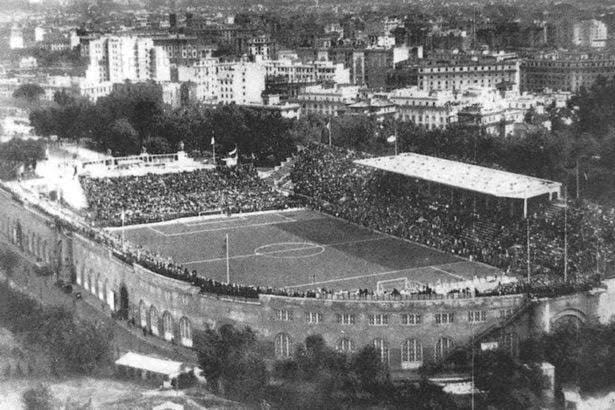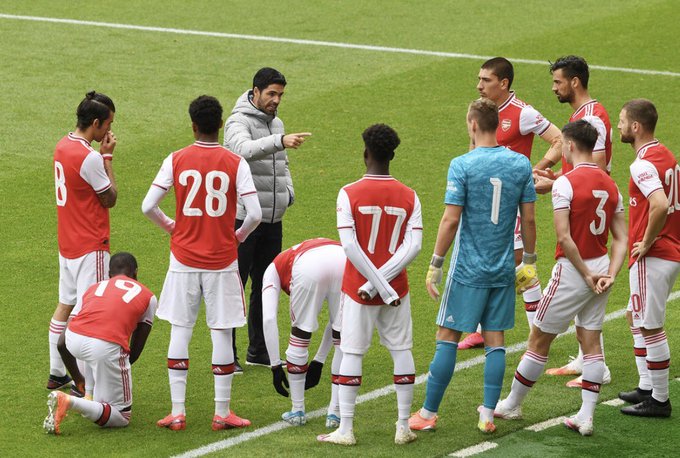The Manor Ground- Arsenals first stadium
When many think of Arsenal’s old home they tend to think of Highbury and they wouldn’t be wrong of course, however their first true stadium was based in Woolwich, South Plumstead in London.
The name of their original home was the all encompassing Manor Ground. At the time the Gunners went by the name of “Royal Arsenal” which was the name of the ammunition factory the club was born out of in Woolwich, it would later be changed to “Woolwich Arsenal” in the 1890s before they departed Kent for good in 1913 for North London. When Arsenal established their presence in 1888 at the location there were little facilities for them to bear, with some hands on work they hauled in wagons with the help of the army for fans to stand on for games.
Within a short period Arsenal had had enough of the number of problems which accompanied their time at the Manor Ground in 1890. Their home sat on a large slope which meant spectators could watch from above and didn’t need to pay to watch which cost the club dearly, they didn’t have any real terracing or stands, on top of this accompanying the southern part of the stadium was Southern Outfall Sewer which created extremely and poor muddy playing conditions which diminished the name of Arsenal and their ground.
Arsenal briefly left the Manor Ground for the Invicta Ground between 1890 and 1893 which was designated almost over the road from one another. There they were blessed with a stand, terracing and changing rooms which the Gunners didn’t contain at their previous stadium. However Arsenal popped back over the road to their former emporium after being forced out of the Invicta by the landlord after struggling to pay rent, after becoming professional and joining forces with the football league which was when the club changed from “Royal Arsenal” to “Woolwich Arsenal”.
For the next two decades till 1913 when Arsenal left for Highbury they moved back to their now preferred home the Manor Ground, after making enough money £6,000 thanks to a share crisis to buy the stadium. With money in hand the Gunners were finally able to construct a proper stadium with a stand and terracing being built. For their 1893/94 debut campaign when Woolwich Arsenal finished ninth in the Second Division and over 20 points off of top spot, their rough attendance for the season was 6,000, which was higher than what they had been achieving previously!
After nearly ten years of football league action a second stand was added to the Manor Ground in 1904. This new terrace became the first ever “Spion Kop” in English football to date, during the same year Woolwich Arsenal had earned promotion to the top-flight of English football for the first time with attendances jumping massively to 20,000 on a few occasions but this was not a constant.
With almost 20 years of First and Second Division football played at Manor Ground, Sir Henry Norris who was already chairman of Fulham picked up the pieces at Arsenal as the Gunners new chair in 1910, within only a handful of years he transported the club to Highbury in 1913 with not too many handkerchiefs being waved at Woolwich.
Not long afterwards the old Manor Ground was knocked down and laid abandoned until now over a century later. Exactly 1,750 new homes have or will be built by the end of 2030 on the once foundations of The Arsenal in Plumstead.
Liam Harding
Do you want to read our whole collection of history articles? Check out our Just Arsenal History section
CALLING ALL ARSENAL FANS! Anyone who would like to contribute an Article or Video opinion piece on JustArsenal, please contact us through this link…






We were called Dial Square before the name change to Royal Arsenal and played most games on Plumstead Common, eventually moving to the Manor Ground. Dial Square is a must visit for Arsenal supporters to see where we came from with some of the original cannons on the green and in the square. Just get on the DLR (Docklands Light Railway) and get off at Woolwich, then a hundred metres or so to the old Dial Square factory site with lots of history there, and a decent pub/restaurant.
Spot on GB. We won our first-ever match, in 1886, against Eastern Wanders 6-0.
“Their home sat on a large slope which meant spectators could watch from above and didn’t need to pay to watch” This surprises me as that bit of land there is very flat and the only thing that overlooks it is the Sewer bank (about 20ft). It would be true of the other ground (at Conway Road), which is at the bottom of a steep hill. Some of the houses at the Conway Road site (which I assume is the Invicta) still have bits of terracing in their gardens.